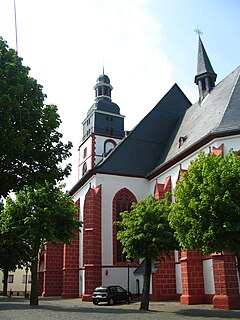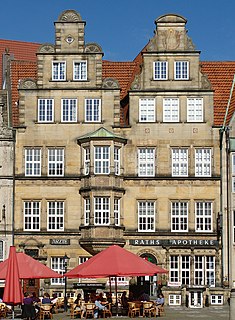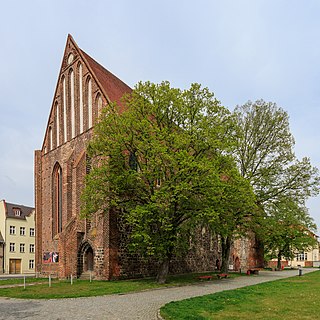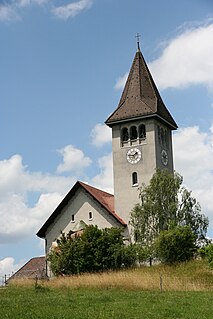| St. Georg | |
|---|---|
 Georgskirche | |
| 51°29′37″N07°33′42″E / 51.49361°N 7.56167°E Coordinates: 51°29′37″N07°33′42″E / 51.49361°N 7.56167°E | |
| Location | Aplerbeck, North Rhine-Westphalia |
| Country | Germany |
| Denomination | Protestant |
| Website | www |
| Architecture | |
| Architectural type | Cross basilica |
| Style | Romanesque |
| Completed | ca. 1150 |
| Administration | |
| Parish | Evangelische Georgs-Kirchengemeinde Dortmund |


St. Georg is a church and Protestant parish in Aplerbeck, now part of Dortmund, North Rhine-Westphalia, Germany. It is a Romanesque cross basilica (Kreuzbasilika) from the 12th century. The only building in Dortmund of its kind, it is a listed monument. [1]

Aplerbeck was a village in Germany documented first in 899. Since 1929, it has been a suburb (Ortsteil) of Dortmund in the Ruhr district of North Rhine-Westphalia, located in the city's south-east. The river Emscher, a tributary of the Ruhr, crosses Aplerbeck.

Dortmund is, with a population of 586,600 (2017), the third largest city of Germany's most populous federal state of North Rhine-Westphalia after Cologne and Düsseldorf, and Germany's eighth largest city. It is the largest city of the Ruhr, Germany's largest urban area with some 5.1 million (2011) inhabitants, as well as the largest city of Westphalia. On the Emscher and Ruhr rivers, it lies in the Rhine-Ruhr Metropolitan Region and is considered the administrative, commercial and cultural centre of the eastern Ruhr.

North Rhine-Westphalia is a state of Germany.
Contents
In the 19th century when the town grew due to industrialisation, a larger church was built, and St. Georg fell into disrepair. It served as a community hall from 1926, and was restored as a church from 1963. It is again the parish church, while the larger church has been mostly used for concerts since 1999.

Industrialisation is the period of social and economic change that transforms a human group from an agrarian society into an industrial society, involving the extensive re-organisation of an economy for the purpose of manufacturing.

The Große Kirche Aplerbeck is a Protestant church in Aplerbeck, now part of Dortmund, Germany. It was built from 1867 to 1869 in Gothic Revival style, designed by Christian Heyden. A listed monument, it is used by the parish St. Georg, serving mostly as a concert church.














